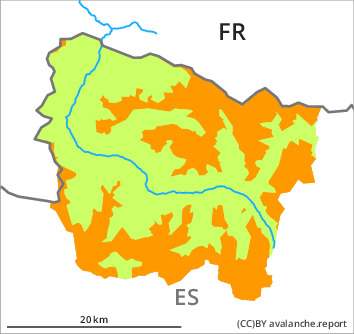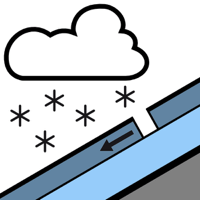
Danger level

1500m
Avalanche Problem

New snow

1500m


Wind slab

2000m


New snow and wind slabs require caution.
The new snow can be released easily, even by a single winter sport participant in all aspects above approximately 1500 m. Sometimes the avalanches are medium-sized and in many cases easily released. As a consequence of warming during the day and the solar radiation, the likelihood of moist avalanches being released will increase appreciably on very steep sunny slopes.
The sometimes deep wind slabs can be released easily. or in isolated cases naturally, in particular on steep shady slopes. The avalanche prone locations are to be found especially adjacent to ridgelines and in gullies and bowls, and behind abrupt changes in the terrain.
Defensive route selection is required.
The sometimes deep wind slabs can be released easily. or in isolated cases naturally, in particular on steep shady slopes. The avalanche prone locations are to be found especially adjacent to ridgelines and in gullies and bowls, and behind abrupt changes in the terrain.
Defensive route selection is required.
Snowpack
>
15 to 20 cm of snow, and even more in some localities, has fallen above approximately 1800 m. In some regions 5 cm of snow will fall until the evening above approximately 1500 m. The southerly wind has transported the new snow.
The solar radiation will give rise from early morning to increasing moistening of the snowpack on sunny slopes. The new snow and wind slabs have bonded well with the old snowpack in all aspects.
The solar radiation will give rise from early morning to increasing moistening of the snowpack on sunny slopes. The new snow and wind slabs have bonded well with the old snowpack in all aspects.
Tendency
Thursday: Gradual increase in danger of dry avalanches as a consequence of the precipitation.